Organic search faces increased competition from paid ads, knowledge graph placements, featured snippets, and more features taking over the search results.
This has contributed to the decline of the organic click-through rate, or CTR, in recent years (and trouble for digital marketers and SEOs!).
Just look at how much the search engine results page (SERP) has changed over the years for the keyword “hotels”:
It’s no longer enough to rank in the top spot organically.
You need to entice searchers to actually click your link.
We have mapped out a few processes that can help you improve your rankings (and therefore your organic CTR over time).
Recommended Reading: 13 Ways to Use CTR Data for Your SEO Campaigns
By parsing through Google Search Console and Google Analytics data, you can pinpoint trouble areas to improve.
Organic Click-Through Rate is on a Decline
First, it’s important to understand that the value of rank position one on Google ranking is being eroded.
In our own 2021 research, we've found this pattern to hold true: click-through rates have declined significantly — especially for top positions.
See the latest 2021 CTR numbers from the LARGEST CTR study ever conducted.
In previous years, if you ranked in the top position you would expect a pretty high level of traffic to your website.
Here's a glimpse at desktop and mobile CTR:
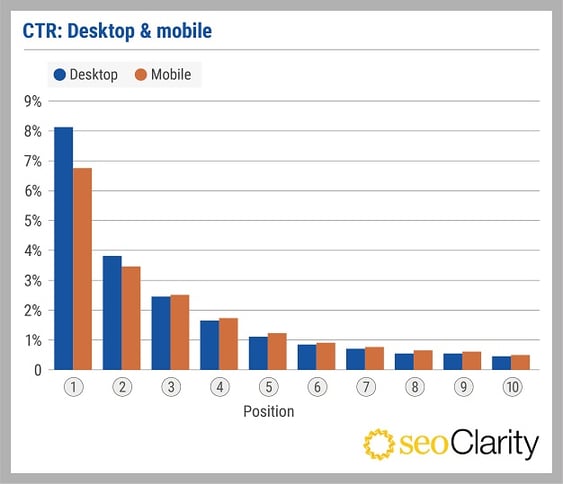 (Comparing mobile versus desktop CTR.)
(Comparing mobile versus desktop CTR.)
Additional search features within Google have changed and evolved over the past few years, with many becoming common on the SERPs.
They compete for attention with other algorithmic factors. This leaves little room above the fold for organic search results — or the traditional organic blue links from a distant time ago.
How to Determine Organic Click-Through Rate
An indispensable tool, Research Grid allows research for any keyword in the search landscape. It also displays the top ranking sites and the cost per click (CPC) for search engine ads.
At the top of our research on the term "gym shoes for men", we see the Average Search Volume and Estimated Traffic for Rank 1.

As you can see from the example above, the anticipated click through rate is approximately 19.3% for the top position (this is an easy calculation of Estimated Traffic for Rank 1 divided by the Average Search Volume).
We also have a great post that you can follow along with: How to Find Your True CTR in SEO (And What to Do With It).
Try the Research Grid yourself for the queries of your choice with free access.
Sometimes, high rankings aren’t enough to encourage eager searchers back to your site. It can take a bit more finesse.
This is why it’s important to optimize your title tags, meta descriptions, and other elements to increase CTR that we will cover down below.
Before You Begin
Before beginning your refresh journey, you will want to ensure your Google Search Console, or GSC, data is backed up.
For seoClarity clients, simply log into Search Analytics which stores all historical data (and actually provides more data, including the keyword that brought the traffic to the landing page).
Not an seoClarity client? You can complete this process manually through Google Sheets. You’re going to want to collect more than three months of data so you can observe trend lines and make year-over-year comparisons.
- Sign into your Gmail account.
- Create a new Google Sheets document.
- Navigate to the “Add-ons” tag.
- Get Add-ons
- Search: {Search Analytics for Sheets}
Once you have enabled the add-on in Google Sheets you need to create a new report and schedule a monthly backup of your data. You’re already tracking it so why not store your data and use it to your advantage?
Identify Areas of Opportunity
Using seoClarity
Through Search Analytics in seoClarity, you can identify the top landing pages to optimize the click-through rate within just a few clicks and filters.
In this example, we first sorted by CTR, then filtered by impressions to surface the top landing pages, located our top rank positions (we filtered by <10 in this example, but you could also do <6 to get your top ranked pages).
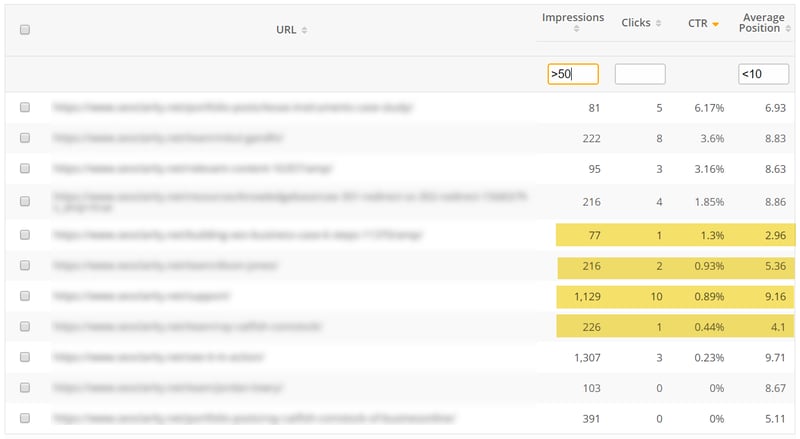
You can also use Search Analytics to see a trended view of your CTR over time. This allows for a YoY comparison, or any timeline of your choice, of the CTR for the top 10 rank positions.
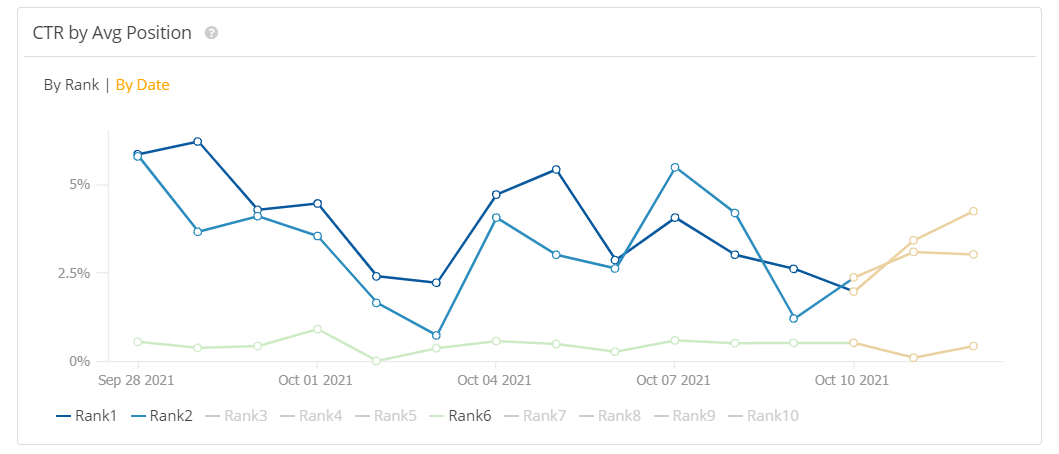
The Manual Process Using Google Analytics and GSC
If you don’t have access to Search Analytics in seoClarity, here are the manual steps using Google Search Console and Google Analytics.
To get started, log into your Google Analytics account and look under “Search Console”, “Landing Pages”. Here, we can gather specific criteria to evaluate and determine areas of opportunity.
This report will give you a list of all of your website’s landing pages that are driving impressions, clicks, and contributing sessions to the site. From here, we need to separate the wheat from the chaff. To accomplish this:
1. Add a filter for CTR. You want to include all pages with a click-through rate below the site average.

2. Next, filter for all pages that have an average position either on the first page or very close to it.

The end result is a list of web page URLs with a below average click-through rate that are – on average – placed near the first page.
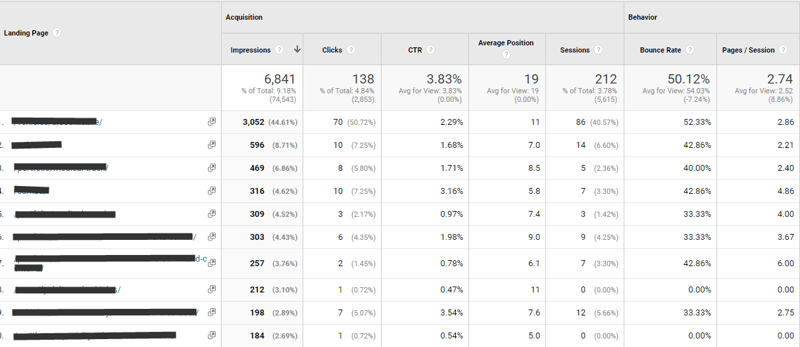
Here’s the key. You want to create a filtered segment within Search Console’s Landing Page report to identify growth opportunities.
To achieve this you need to filter for pages with a below site average click-through rate that are near the first page for greatest impact.
Once you export the data you can further segment to identify page opportunities that are generating high impressions but low CTR. From here, you can triage which pages need your immediate attention.
That manual process is a lot to take on for even the most advanced teams. Make this process easier next time when you check out a demo of our platform today!
How to Improve CTR in SEO
#1. Craft Compelling Title Tags and Meta Descriptions
It’s true: the use of keywords in title tags and meta descriptions have lost some of their importance. The era of keyword stuffing is long gone. So, we need to write these elements in a way that makes them enticing to the user.
Let’s look at keyword stuffed title tags vs. optimized title tags.
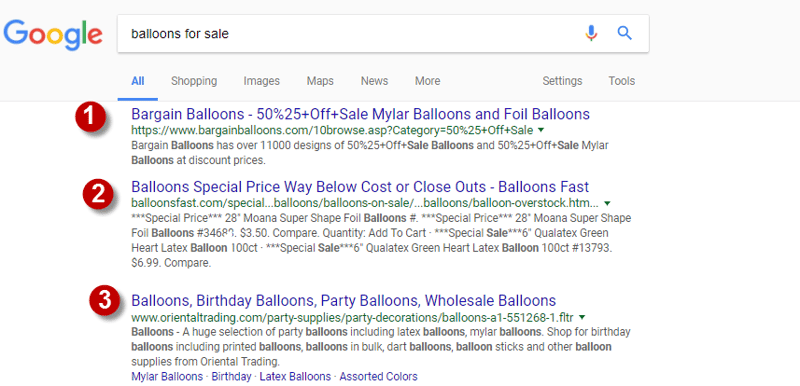
In the example above, think about which title tag & meta description reads better to a user. (Hint: it's not 3!)
Not all of your competitors will take the time to write compelling title tags or meta descriptions. This presents an opportunity for those willing to hustle a bit. Sure, their prominence has diminished as a ranking factor, but they can still improve CTR and drive organic traffic.
You can even run a title tag test to see which elements in the title perform best over time.
#2. Have an Accurate URL Structure
The meta data isn't the only information a user sees on the SERP - they also see the layering of a page’s URL.
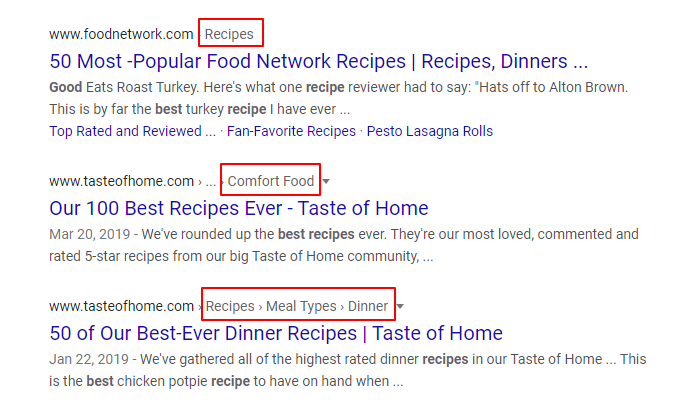 So, be sure to be specific and tell searchers where they’ll be led to if they click on your listing.
So, be sure to be specific and tell searchers where they’ll be led to if they click on your listing.
Most content management systems allow you to easy adjust the page structure of where you want that page to live. For example, our site seoClarity has some pages housed under /blog (like this one) and some that are classified as /pillar.
It may not seem like a huge step, but showing someone where they’re navigating to can help users know that your listing is going to provide relevant information to their query.
Someone looking to buy a product, for example, probably doesn’t want to click on a URL that takes them to a blog. (Depending on their stage of the buyer’s funnel, of course.)
#3. Implement Structured Data to Have Rich Snippets on SERPs
Structured data from schema.org has a huge benefit in SEO: not only does it inform the search engines on what your page is about, it also offers a better user experience starting right on the SERP.
This in turn, can boost your organic click-through rates.
Just look at the example below.
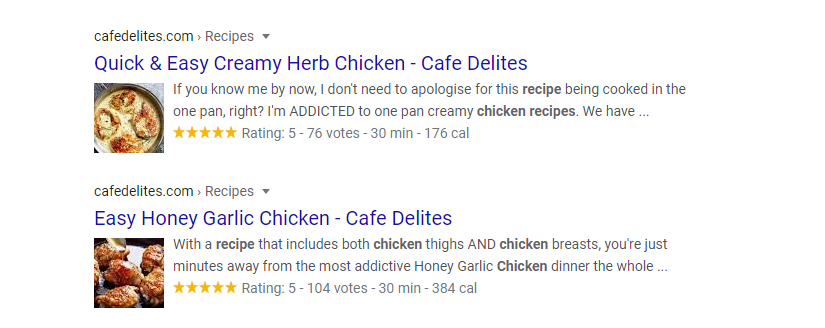
This website has a star rating, image, time to prepare, and more. All of this information directly benefits the end users, and can have a significant impact on CTR.
Schema and structured data are surprisingly underutilized by SEOs, and for an understandable reason: it can be tedious to build, test, and deploy the structured data error-free.
With a tool like Schema Builder, SEOs can now implement a variety of different schema types with just a few clicks. The process just got a whole lot easier for deploying structured data.
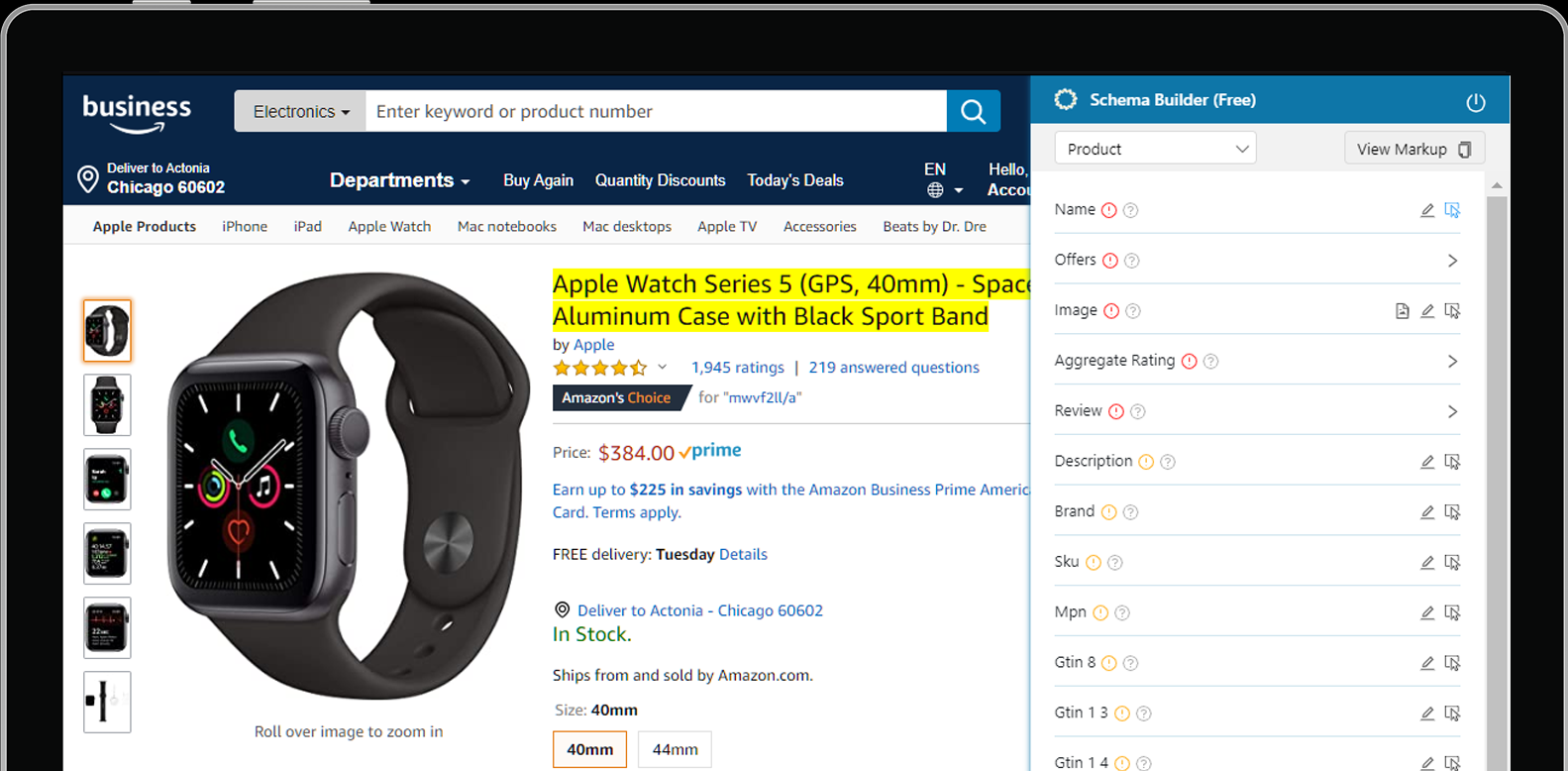
(Schema Builder allows you to build, test and deploy structured data with a few clicks.)
#4. Use Google Adwords
With so many different elements that make up a SERP listing (i.e. title tags, meta descriptions, etc.) it’s important to get an idea of what the search listing will look like.
Analyze keywords with a low CTR that you rank high enough for that you can create paid ads for those keywords.
This approach will increase your real estate space on the SERP (and your chances to earn a click) but it also allows you to test different headlines and meta descriptions to identify a winner.
Take those findings and apply them to your organic search listing.
#5. Address the Right User Intent
Offering users the type of content they're looking for is key in earning clicks.
If, for example, someone searches for "Thai food", they probably want to find a Thai restaurant or order food, so this query has more of a local or transactional intent over informational.
The Local Pack on the SERP serves as proof of this intent (since Google wants to give its users the best experience possible and address their intent correctly) but we can also confirm this with a keywords research tool.
If you were to create a blog post on different types of Thai food, you'd be missing the users' intent.
Content that misses the mark on intent hardly ever ranks well in the search results, let alone earns clicks from users.
Be mindful of user intent when you create content so you can deliver on users' needs and expectations!
#6. Fix Keyword Cannibalization
Sometimes your CTR suffers not because clicks go to the competition, but because you’re competing with yourself.
With keyword cannibalization, where multiple pages on your site compete for space on the SERP for the same query, clicks are distributed to multiple pages as opposed to one main page.
This keyword, for example, has three pages competing for rankings on the SERPs:
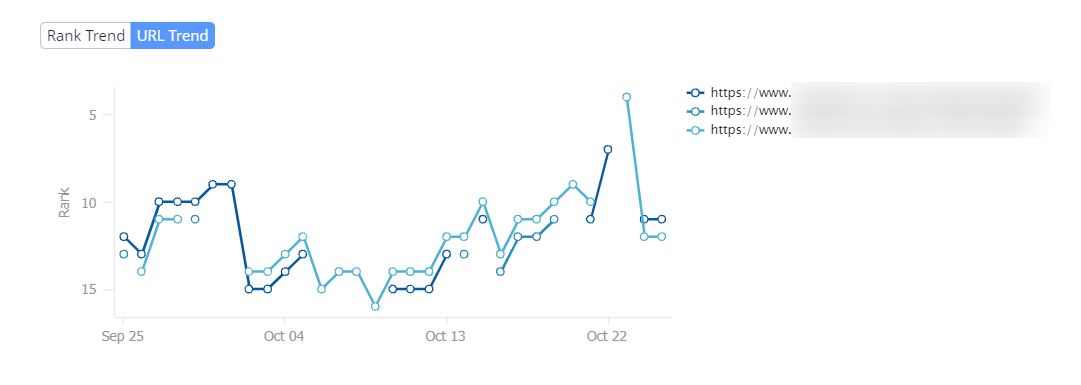
(URL Trend report in seoClarity's Rank Intelligence.)
One page that ranks may not be the most relevant or ideal page to be ranking, and this can cause harm to CTR as well.
#7. Take Advantage of SERP Features
Consider optimizing your content to land in the Answer Box, image carousel, video carousel, or local listings.
This way your content can take the form of a different presentation and take up more visual space on the SERPs as opposed to standard blue links.
#8. Optimize Page Speed
While improving page speed doesn't have a direct impact on improving your CTR, it's still an important metric to be mindful of for the end user experience.
If your site loads slowly, users will bounce back to the SERP — and those clicks may never get reported.
Recommended Reading: Why Page Speed Matters and How to Improve It
Conclusion
Changes within the SERP won't slow down anytime soon. To mitigate some of our losses in clicks (and subsequently lead and conversion rates), we can:
- Write more compelling title tags and meta descriptions
- Use an accurate URL structure
- Implement schema
- Use Google AdWords
- Address the right intent
- Fix keyword cannibalization
- Take advantage of SERP features
- Optimize page speed
Editor's Note: Our industry moves fast! This piece was originally updated in February 2018 and has been updated to reflect changes in the SERP and advancements in SEO.








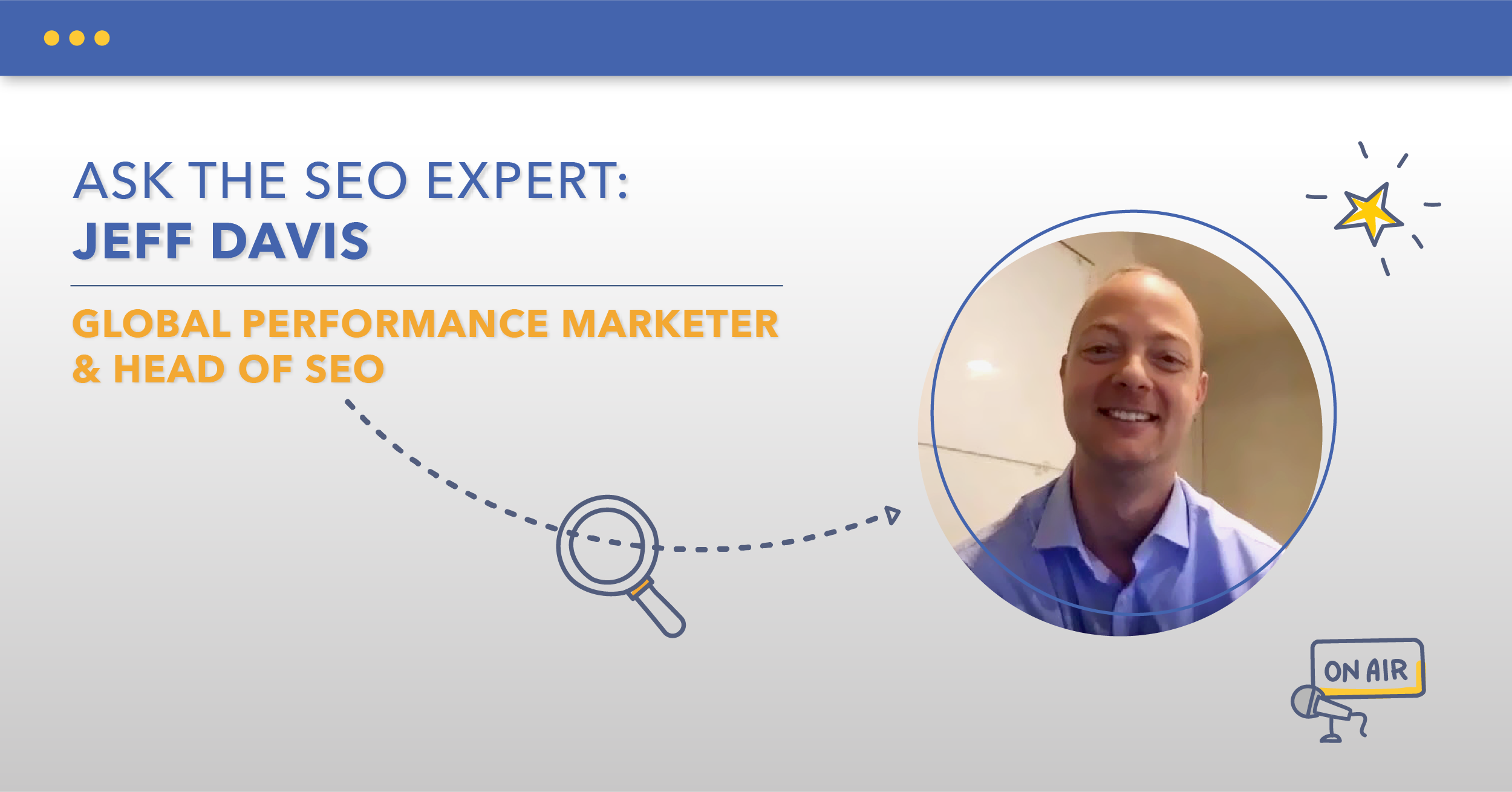

4 Comments
Click here to read/write comments